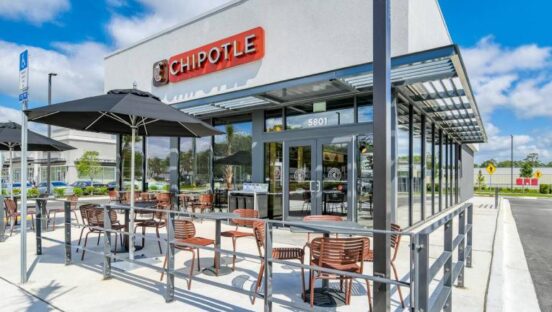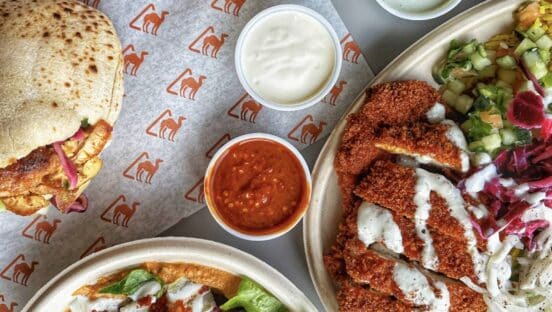





Keep it in order
There are countless compliance and regulatory policies restaurant owners, operators, and managers need to be aware of, but those associated with wage and hour claims are among the most frequent, and most complicated.
Restaurants have to make sure employees are paid what the law stipulates and aren’t leaving any money on the table they are entitled to, otherwise they may be faced with a wage and hour complaint from a current or previous employee. Wage and hour suits are among the most common lawsuits awarded to employees because paystubs are easily accessible and offer concrete evidence for when there is a mistake made with an employee’s pay.
Here are some of the biggest mistakes restaurant owners make when it comes to wage and hour compliance, and tips for avoiding them.
Click the arrows in the picture above to get started.
Not considering uniforms
If a restaurant requires employees to wear a uniform, it is important to understand the laws regarding the cost of the uniform and who must pay. For example, employers are not allowed to require employees to pay for uniforms if that purchase brings their wages below minimum wage. Additionally, the Department of Labor (DOL) doesn’t consider tips when determining whether the uniform cost would drop an employee’s wages below minimum wage. For many employees working in a restaurant, their wages are at or below minimum wage and therefore it would not be permissible to charge these employees for a uniform.
To avoid potential wage and hour violations, it is best to provide required uniforms for employees instead of having them buy their own or taking it out of their paycheck. Another option is to require employees to wear a more general outfit, like dark jeans and a white top, which the DOL doesn’t consider to be a uniform.
Not adhering to meal and break laws
Many states have instituted meal and break laws that stipulate the amount of breaks, how long they should be, and when employees should take them. For example, in California, if an employee works a shift that is more than five hours, they have to get a meal break that is no less than 30 minutes. Failing to provide this meal break can result in daily penalties for the employer.
Ensuring compliance with meal and break laws is especially challenging in the restaurant industry as it is a fast-paced environment with long hours and demanding customers. Every restaurant should have a written policy that employees are aware of to mitigate any risks of lawsuits. Additionally, restaurants need to make sure managers are trained on these laws, and are actively enforcing them and encouraging employees to take their breaks.
Miscalculating overtime pay
Whether it’s underestimating the demand of a rush time, or having staff call out, there are numerous instances where staff will have to work overtime and be eligible for overtime pay. However, coming up with the correct overtime rate can prove to be a challenge in the restaurant industry.
For example, if a tipped employee is paid using the tip credit, the correct overtime pay is calculated by taking the minimum wage, multiplying it by 1.5 and then subtracting the tip credit, which is the difference between the legal minimum wage and what restaurants are allowed to pay tipped employees. Where restaurants often go wrong is by simply multiplying the tipped employees’ hourly rate by 1.5, which would ultimately result in underpayment of overtime wages.
Another tricky area for calculating overtime is when dealing with a service charge (or auto gratuity), which the DOL defines as any type of tip or fee that is automatically added onto a customer’s bill. Normally, employers do not need to include tips when calculating overtime pay, but service charges are the one exception. Employers are required to include the service charge when determining the employee’s regular rate of pay, which will effectively increase the employee’s overtime rate.
If you run your payroll through a software, make sure to check with your payroll software or POS system to ensure they are accurately calculating overtime rates.
Misclassifying employees
Classifying employees correctly as exempt or nonexempt is crucial for restaurants because these classifications determine who is eligible for overtime pay and who isn’t. When an employee is misclassified, the restaurant is at risk for a lawsuit requiring back wages and damages paid to the employee.
It is a common misconception that as long as you pay someone a salary, then they are not eligible to receive overtime but just meeting the salary requirement is not enough. That employee also must pass a duties test, which is a measure the DOL uses to determine the scope of an employee’s responsibilities and understand what their role actually entails regardless of their title.
For example, you may give someone the title of Manager on Duty, or Shift Lead, but not actually the responsible of managing other employees, and therefore they may not meet the requirements to be exempt, even if they are a salaried employee.
When determining how to classify employees, look at their role and responsibilities holistically. What are their primary duties? Do they occasionally help manage other people, or do they have the ability to hire, disciple and terminate employees? These types of questions will make sure employees are classified correctly and help to avoid potential lawsuits.
Having employees included in tip pooling that shouldn’t be
The DOL requires that employees retain all of their tips and the one exception to this is a valid tip pool or tip sharing arrangement. However, employers must be careful with who is included in a tip pool. Managers and supervisors are never allowed to be included in a tip pool, and unless the restaurant pays all employees in the tip pool the full minimum wage, only certain employees can be included.
If you are not paying the full minimum wage, restaurants need to make sure only people that customarily receive tips and provide direct service to customers are in the tip pool. One of the common mistakes is determining whether hosts should be included or not. If a host only shows customers to their seats and walks away, they shouldn’t be included in the tip pool because they didn’t provide service to the customer beyond seating them. If the host is responsible for checking in on the customer, refilling water, helping bus the table, then they may qualify to be included in the tip pool.
Wage and hour laws are complicated, but you don’t need to be an expert to help mitigate risk at your restaurant. Having a basic understanding of these most common mistakes will help to keep your restaurant compliant and your employees happy!
Emily Quinn is the HR Practice Leader at StratEx, where she helps guide and mentor StratEx’s team of HR consultants. Quinn’s expertise lies in helping companies reduce risk by ensuring compliance with all applicable labor and employment laws.












